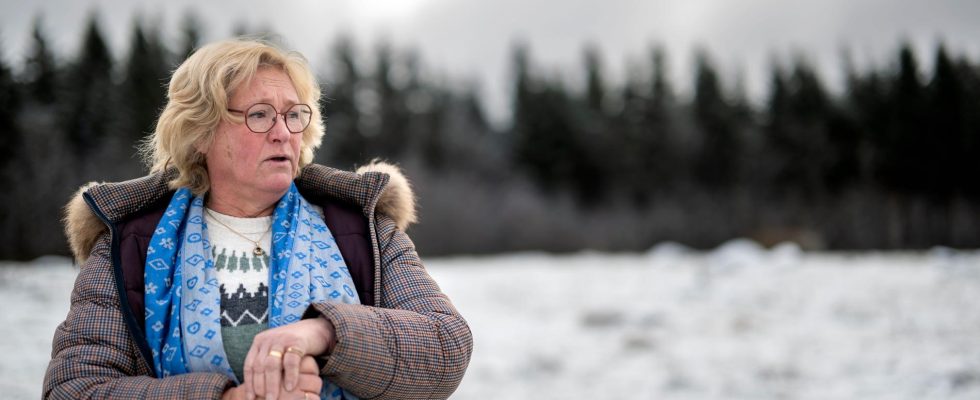1 / 6 Photo: Björn Larsson Rosvall/TT
The government is to expand nuclear power and is discussing removing the ban on mining uranium. In Falköping, where Sweden’s only former uranium mine was located, the issue is a stinging wound and the opposition massive.
– Where is the morality when you talk about destroying land that can be used by generations to come in order to take up something that is perishable?
Jan Lindholm strikes out with his arm over the undulating landscape. Nearby was formerly the Ranstadsverket, Sweden’s only uranium mine. The road sign showing where to take off to get there is still there but most of the buildings gone. In some buildings there are companies that sell small houses on wheels. A few dilapidated caravans are on the asphalt.
Beyond the asphalt are forests and waterways with signs stating that it is an environmental risk area after acid-treated alum shale was deposited in the 1960s in connection with uranium mining, which continued until 1969.
The environmental risks do not come primarily from the fact that uranium is radioactive, but from the fact that it is a toxic heavy metal. There are also other heavy metals lying in the ground, a residue from the mine.
Evokes emotions
– When the ban on mining uranium came in 2018, I thought it would be calm, that we could blow our breath. But now everything is being stirred up again, says Jan Lindholm.
The last time uranium mining was discussed in the area, the protests from the local population were massive and in the end there was no uranium mining in the area, among other things with the help of the local veto. When the government earlier this year began to speak positively of new Swedish nuclear power plants and the benefits of Swedish uranium mining, the reactions came lightning fast from local associations.
Jan Lindholm was one of those who worked actively to question mining from the beginning. He has been chairman of the local Nature Conservation Association and when a protest meeting was held in Falköping last spring, he was there. Fertile agricultural lands with areas that are important for biological diversity should not be destroyed, they believe.
– I hardly know anyone who is in favor, he says and is supported by his wife Gunnel Lindholm.
“Better wind power”
Another of those who live in the area is Wanja Wallemyr. She also frowns at the fact that the government wants uranium mining in Sweden.
Active in the Center Party and LRF locally, she questions the government’s willingness to invest heavily in nuclear power. Mining, waste and the risk of accidents make it anything but sustainable, she believes.
– We need to change, there is no doubt about that, but there are other significantly safer types of renewable energy, such as wind power, she says.
Behind the family’s 19th-century farm are several wind turbines, in which many in the village are co-owners. She herself owns one.
– Some think they destroy nature, but I don’t think you can say no to everything. I usually say that with wind turbines we borrow part of the view for a number of years, then they can be dismantled. With a mine, we affect nature for an unforeseeable future, she says.
After 25 local associations came together this spring in a call against uranium mining, it is clear that there will be no shrimp sandwich for those who want to start. Even the moderate chairman of the municipal board does not want to see any mines.
– Not here, it’s not a suitable place, says municipal board chairman Adam Johansson (M).
According to him, there is political consensus that it will be a resounding no. He does not see the fact that that opinion goes against that of the parent party as a problem. He has promised the residents that there will be no uranium mining.
– I am a market liberal, but just as Sweden sells iron ore on a global market, I think we can buy uranium, he says.
FACTS The Swedish Employment Agency
Uranium mining at the Ranstadsverket began in 1965 and ended in 1969. The plant is located in Västergötland next to Sydbillingen, where there is alum shale that contains higher levels of uranium than normal alum shale.
The purpose of the Ranstadsverket was to make Sweden independent of uranium imports – part of the so-called “Swedish line” which was established in the atomic energy investigation in 1955.
In connection with the oil crisis in the mid-1970s, a new attempt was made to start large-scale uranium mining. But no business was ever started. The government rejected the application after both Skövde and Falköping municipalities vetoed the project.
The Ranstadsverket is now decommissioned. The covered landfill with mining waste is classified as an environmental risk area. Environmental control is handled by the County Administrative Board.
Source: Radiation Safety Authority.
Read more
